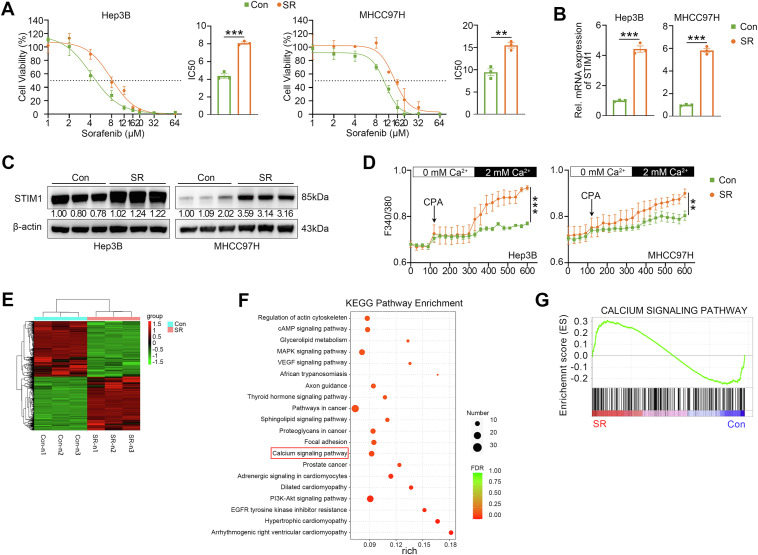
STIM1 promotes acquired resistance to sorafenib by attenuating ferroptosis in hepatocellular carcinoma


Dysregulated calcium (Ca2+) signaling pathways are associated with tumor cell death and drug resistance. In non-excitable cells, such as hepatocellular carcinoma (HCC) cells, the primary pathway for Ca2+ influx is through stromal interaction molecule 1 (STIM1)-mediated store-operated calcium entry (SOCE). Previous studies have demonstrated the involvement of STIM1-mediated SOCE in processes such as genesis, metastasis, and stem cell self-renewal of HCC. However, it remains unclear whether STIM1-mediated SOCE plays a role in developing acquired resistance to sorafenib in HCC patients. In this study, we established acquired sorafenib-resistant (SR) HCC cell lines by intermittently exposing them to increasing concentrations of sorafenib. Our results showed higher levels of STIM1 and stronger SOCE in SR cells compared with parental cells. Deleting STIM1 significantly enhanced sensitivity to sorafenib in SR cells, while overexpressing STIM1 promoted SR by activating SOCE. Mechanistically, STIM1 increased the transcription of SLC7A11 through the SOCE-CaN-NFAT pathway. Subsequently, up-regulated SLC7A11 increased glutathione synthesis, resulting in ferroptosis insensitivity and SR. Furthermore, combining the SOCE inhibitor SKF96365 with sorafenib significantly improved the sensitivity of SR cells to sorafenib both in vitro and in vivo. These findings suggest a potential strategy to overcome acquired resistance to sorafenib in HCC cells.
